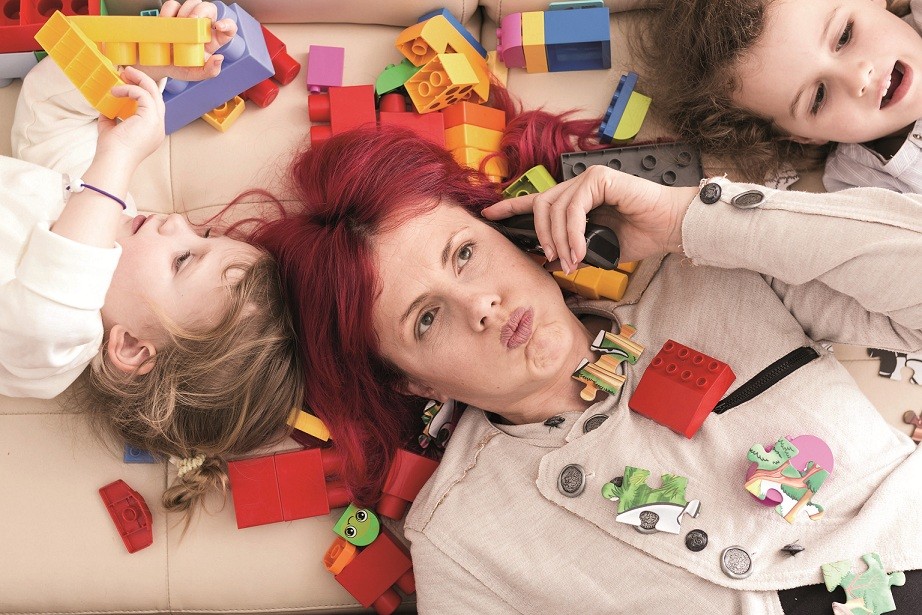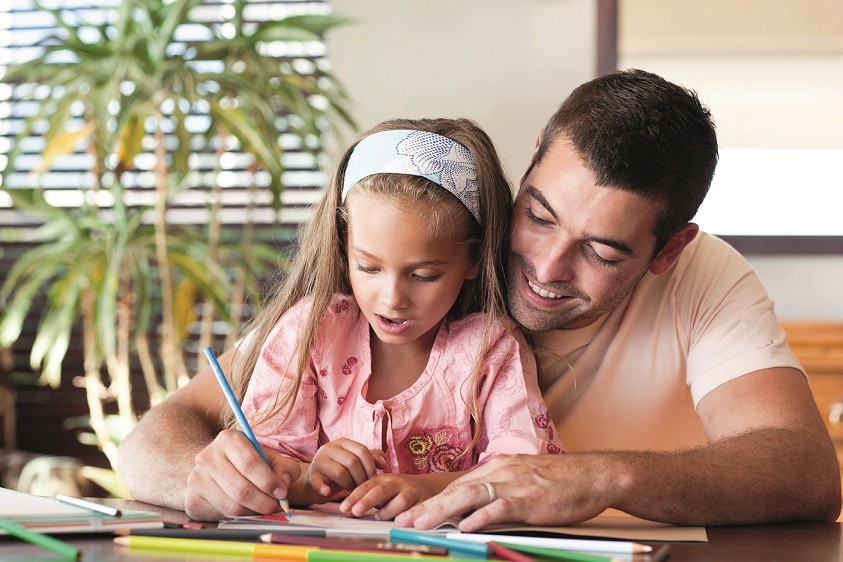
As a KonMari consultant, I get parents asking me these questions all the time: Why can’t they get their children to tidy up their rooms? Why must they scream till their blood vessels burst before anything gets done?
My reply would be, it is never worth busting blood vessels over arguments with children over clutter and mess… or anything for that matter! I then say, first, please take a deep, calming breath and immediately shut your children’s room doors; tight! Next, calmly go to your room, leaving your door wide open, and start tidying up your own s%#t while announcing loudly GOSH IT FEELS SO GOOD TO DECLUTTER. Then, simply wait and watch because slowly but magically…they will start copying you.
Isn’t that brilliant yet scary all at the same time?
Who knew our children learnt best by watching us?
Except, the thought of tidying one’s room without the aid of an Ayi or a professional organiser leaves most us parents with sweaty palms and heart palpitations; let alone the task of actively being an inspiration to our kids. Mind boggling questions start swarming into their minds. Oh, no! How do I even begin? My children never throw anything away! What if one day we need everything that got tossed out? What if we get stuck halfway through tidying everything up?
Never fear, help is here! You’re welcome ;)
Before we begin, this needs to be addressed right off the bat:
If you and/or your children are perfectly at peace with mess and clutter then please carry on, and I offer this statement from a place of grace with absolutely no judgements whatsoever! As Japanese tidying guru Marie Kondo quips, “Your house will not blow up anyway.”
As for the rest of you and your little ones*, please follow me…
*We recommend tidying with children 3 years old and above.

Self-reflection
Obviously, we are all here because we are currently not satisfied with how our home looks right now; with perhaps certain rooms in particular that need attention, pronto! But I want to invite all parents to quietly pause for a moment to self-reflect. Take a good, long hard look at your children’s rooms by allowing your eyes to gently take in every single item that is present like your children’s clothes, toys, stationery, and books. Every single item that is currently taking up residence here didn’t creep in of its own accord. We have all played a part in welcoming them into the house. So, perhaps before we begin screaming at our kids to tidy their mountain of belongings (we’ve all been there, trust me!) let’s mindfully acknowledge that we, as their adult guardians, are equally responsible for the mess they are in right now.
Envision
Take your child to their room at the peak of its mess and dig a space large enough to fit both of you. Prop your child on your lap or lower yourself to his/her level and have a calm, honest chat. You are both there to understand how they feel about their room so refrain from saying things like See, I told you so! Why don’t you ever listen to Mummy/Daddy?! Instead, I try to ask questions like:
1. How do you feel about your room now? Why do you think you feel this way?
2. Which is your favourite part of your room? Why do you like it?
3. If you had a magic wand, how would you change/ redecorate your room?
4. What activities and hobbies would you like to do in your room once you finish decorating it?
Now here comes the fun part! Get your child to envision their dream room by creating a vision board. This can be achieved by cutting up magazine inspirations, drawing their dream room or simply writing it down. Encourage them to expand their creativity by decorating and colouring their ideal sanctuary to their heart’s content whilst setting realistic expectations with you. You don’t want them to happily paint their ceiling with florescent pink and green polka dots only to have you shoot it down later. Envisioning is an important step as it empowers us to see and manifest an image of our best selves/ person we wish to be so please don’t skip this stage.
Education
It is crucial that our children understand and are aware of climate change and environmental concerns so that we can all do our bit for Mother Earth. We can start by teaching them about the benefits of consuming less. The good news is that there are plenty of children’s books about the planet that parents can read to their child before bedtime. Once our children become aware that each plastic toy eventually ends up in a landfill or a sea creatures’ stomach and never actually “goes away” they learn to be more mindful. Admittedly that’s like pulling a junior Fear Factor stunt but you can pretty much guarantee that there will be less toy tantrums to deal with. Win-win.

Community
Form a network of friends within your community who have children with close but varying ages. This way pre-loved items like toys and clothes can be rotated and shared amongst each other! The last family of the chain can then donate the used items to a charity organisation. In Singapore we have a saying that a child will 快高长大 (kuài gāo zhǎng dà) grow up faster and stronger by wearing hand me downs. I'm not sure how true this is but they'll certainly feel more comfortable.
Chores
In Shanghai, we are spoilt by Ayis who do our chores, wash our clothes and repeatedly clean up after our kids. On Ayi’s day off, bring the kids down to earth by teaching them life skills and empathy. Start with simple tasks, like picking up their toys at the end of the day and putting things back where they belong. By doing this they will quickly learn that the more they amass the more cleanups they will have to do.
The Five Treasures
Before we start tidying up your children’s room, pin up their dream room vision board in a prominent location like their bedroom door. Make a BIG deal about this by dancing around and announce to everyone within earshot that your child is embarking on a life changing mission. Next, set a date excitedly and then manage their expectations by explaining to your child that in order to get to their dream room there is work to be done. The first step is to have them gather and unearth the ‘Five Treasures’ with your help. Do this in the following order:
First treasure: Clothes and accessories
Second treasure: Books
Third treasure: Papers like artwork or old school assignments
Fourth treasure: Miscellaneous e.g. toys, gifts or sports equipment
Fifth treasure: Sentimental items like cards, letters, or soft toys.
This may sound like an enormous feat but you’d be amazed at how smooth and decisive your little ones’ progression can be when you tidy in the above sequence.
In the KonMari method, we tidy by category in order to grasp the total amount we have. This way duplicate items can be easily spotted. Otherwise, imagine tidying drawer by drawer. Just when you thought your child has finally decided which four notebooks to keep, you then open up the last drawer to find thirty more! Are you with me?

Spark Joy!
If we dive deep into our children’s minds and ask them why they designed their dream room/ vision board the way they did, their answers will all be universal - because they love it as it brings them joy. Similarly, for us adults, our dream home is a reflection of our happiness, as do items our children once loved and welcomed into our home. Truthfully though, many of these objects have served their purpose and as such overstayed their welcome; so it is time to set them free from their forgotten confines in your home. But what if my children need them one day? Chances are, if they haven’t touched them till now they most likely won’t need them in the future either. Besides, we live for the present not the past or the future. The here and now is what truly matters.
Tools of the Trade
Before we begin, remember to capture the “before” pictures of your child’s room on your phone so that they can compare and marvel at their accomplishments once they’re done!
I’d also like for you to prepare three large bags labeled “Donate”, “Keep” and “Discard” so it’s much easier for children to help themselves; remember to label them in different colours so that even your super little ones can differentiate!